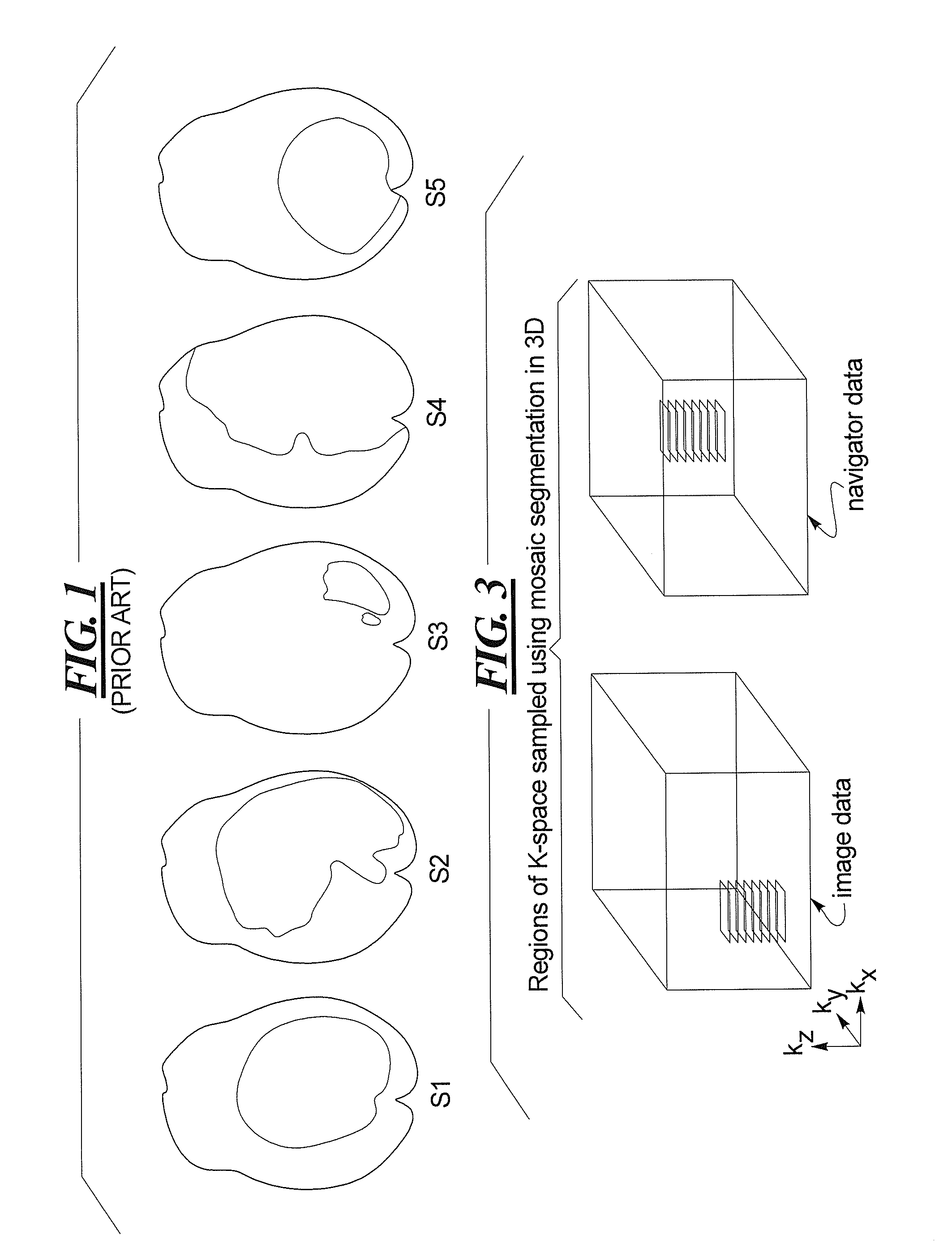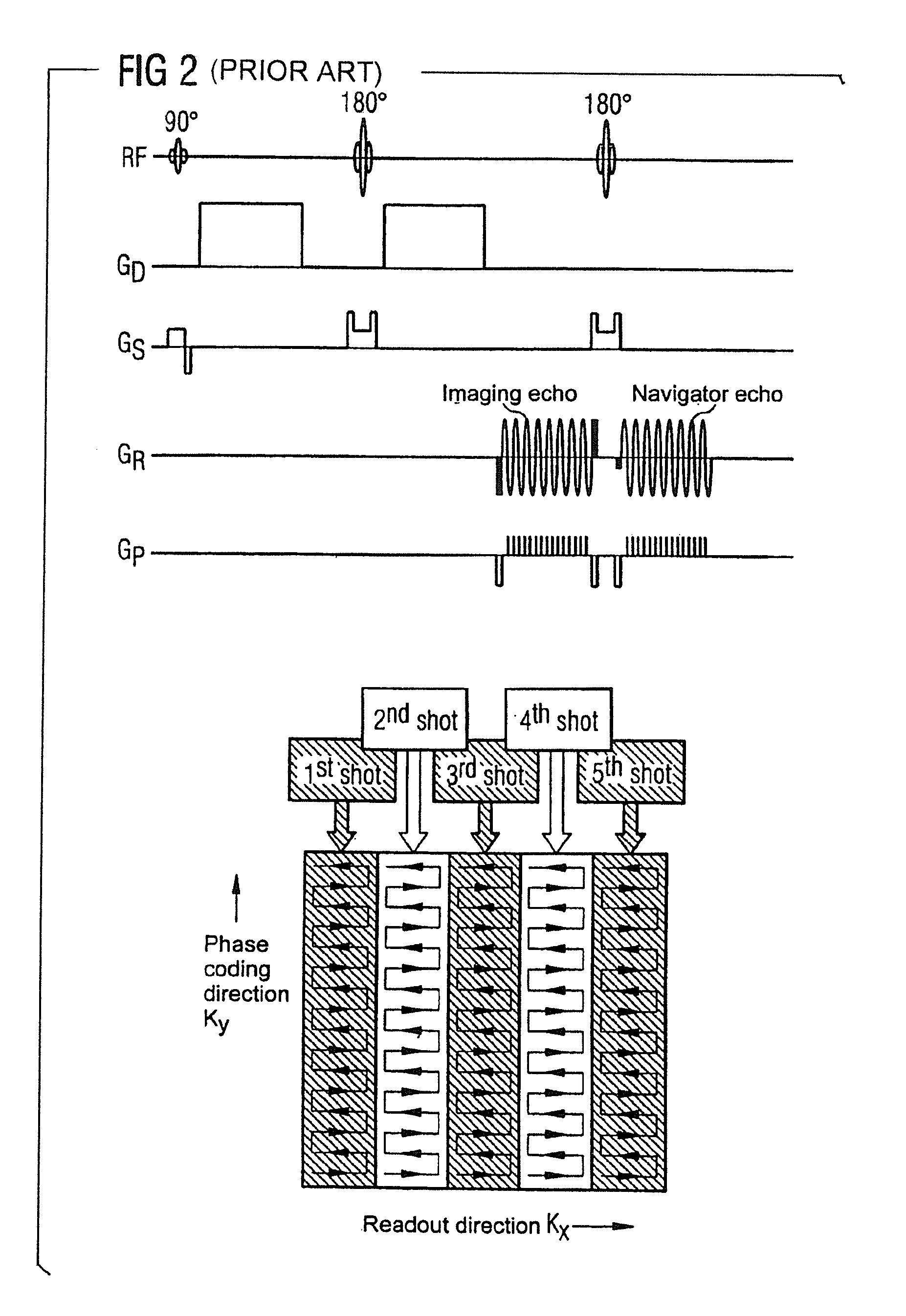Diffusion-weighted magnetic resonance imaging using 3D mosaic segmentation and 3D navigator phase correction
a magnetic resonance imaging and mosaic segmentation technology, applied in the field of diffusion-weighted magnetic resonance imaging, can solve the problems of inability to achieve, sensitive to phase variations, severe image artefacts in the final image, etc., and achieve the effect of reducing image artefacts and speeding up scan times
- Summary
- Abstract
- Description
- Claims
- Application Information
AI Technical Summary
Benefits of technology
Problems solved by technology
Method used
Image
Examples
Embodiment Construction
[0023]FIG. 5 schematically illustrates a magnetic resonance tomography apparatus in which gradient pulses according to the present invention are generated. The design of the magnetic resonance tomography apparatus corresponds a conventional tomography apparatus, with the exceptions discussed below. A basic field magnet 1 generates a temporally constant strong magnetic field for polarization or alignment of the nuclear spins in the examination region of the subject such as, for example, a part of a human body to be examined. The high homogeneity of the basic magnetic field necessary for the magnetic resonance data acquisition is defined in a spherical measurement volume M in which the parts of the human body to be examined are introduced. For support of the homogeneity requirements, and in particular for elimination of temporally invariable influences, shim plates made from ferromagnetic material are mounted at a suitable location. Temporally variable influences are eliminated by shi...
PUM
 Login to View More
Login to View More Abstract
Description
Claims
Application Information
 Login to View More
Login to View More - R&D
- Intellectual Property
- Life Sciences
- Materials
- Tech Scout
- Unparalleled Data Quality
- Higher Quality Content
- 60% Fewer Hallucinations
Browse by: Latest US Patents, China's latest patents, Technical Efficacy Thesaurus, Application Domain, Technology Topic, Popular Technical Reports.
© 2025 PatSnap. All rights reserved.Legal|Privacy policy|Modern Slavery Act Transparency Statement|Sitemap|About US| Contact US: help@patsnap.com



